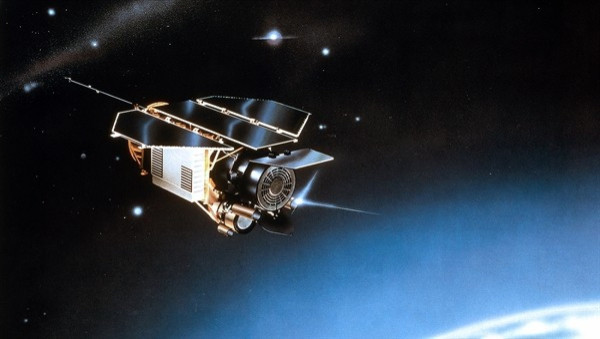German Satellite ROSAT to Fall on Earth This Week: When and Where?

A German satellite, out of control, is set to plunge back to Earth this week.
And again, just like NASA's UARS satellite, we are left with no clue as to where and when the 2.4-ton satellite is making landfall.
The German Roentgen Satellite, or ROSAT, is expected to fall on Earth on Saturday or Sunday, according to SPACE.com, while German space officials suggested a wide re-entry window of between Oct. 21 and Oct. 25.
Built as a joint effort from the UK and the U.S., the ROSAT launched out of Canaveral in the U.S. back in June 1990, with a mission of observing the stars. After making many invaluable discoveries in its 8 years of operation, the ROSAT was shut down in February, 12, 1999.
And the decommissioned satellite drifted away from its orbit several weeks ago.
As ROSAT makes its death plunge, it will most likely break into pieces as it penetrates Earth's atmosphere, some large pieces will survive through the extreme heat in its re-entry, leaving around 3.7 pounds of satellite debris possibly making its way home to mother Earth.
The chances for a piece of the satellite to hit someone on earth is 1 in 2,000, according to what Germany's space agency Deutsches Zentrum für Luft- und Raumfahrt (DLR) officials told the site.
We don't expect big parts to re-enter, except the mirror and the glass and ceramic parts, Jan Woerner, head of the executive board of DLR, told the site.
Usually during re-entry, you have rather clear burning of all the elements, but glass and ceramics may survive and may come down in bigger pieces.
The frustration, and also excitement if you think you are lucky enough to avoid the crash, would be the unpredictable nature of the satellite's fall.
Even one day before re-entry, the estimate will only be accurate to within plus/minus five hours, said DLR. The uncertainty is caused mainly by the fluctuations in solar activity, according to DLR. As solar radiation heats up the Earth's atmosphere, it increases the atmospheric drag, causing fluctuations.
For now, the zones where you can possibly encounter the descending satellite are deemed to extend to 53 degrees northern and southern latitude.
Just 4 weeks ago, NASA's Upper Atmosphere Research Satellite (UARS) plunged into pacific ocean, marking the biggest Nasa spacecraft to fall on Earth.
Leading up to UARS' fall was a huge media buzz, as the path or timeframe of the 7-ton satellite's plunge was not predicted precisely.
While the probe was being tracked by radar stations and experts around the world, the tracking of the satellite remained difficult due to
its shape, size and speed, according to Flight Lieutenant Mike Farrington, who had been monitoring the 35ft long satellite since its launch.
For us, it was an advantage that UARS fell before, said Woerner. We know now a little better how to interpret all the data and use the global network. It was an advantage that the satellite came down before so that now we can look at how to deal with ROSAT and how we deal with this in the future.
© Copyright IBTimes 2024. All rights reserved.





















